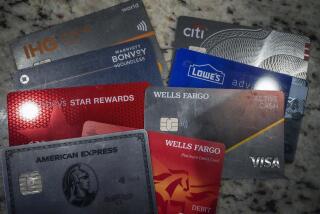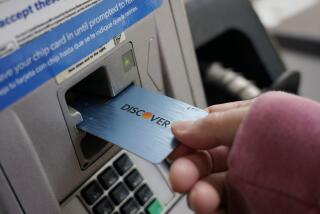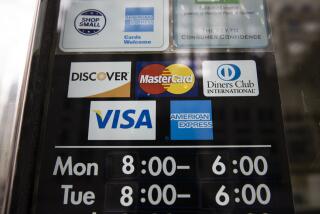Personal Bankruptcy Spree: Let’s Sober Up and Reform
- Share via
Failure to pay debts used to carry a stigma, a scarlet letter of personal finance. That is no longer the case, judging from the record number of personal bankruptcy filings expected when the 1996 figures are in, 1.1 million. That’s 1% of American households, an increase that poses a question: Has it become too easy to use the shield of federal bankruptcy laws to hold creditors at bay?
Yes, considering that 70% of those who file for personal bankruptcy elect not to repay their debts at all. Even those seeking to make good on their bills face complex and daunting court procedures that discourage many people from completing the process.
All of us end up footing the unpaid bills one way or another. Bank card losses--$10.4 billion in 1995 from bankruptcies--are passed on in the form of higher interest rates and fees. Who is to blame? Undisciplined consumers? Too many loopholes in bankruptcy laws? Contradictory state laws? Banks and card issuers too eager and liberal in dispensing credit cards? Probably a combination of all these.
Congress has appointed a National Bankruptcy Review Commission to recommend changes in bankruptcy laws by October. The commission held the first of a series of hearings in Washington last month to gather information.
Despite a healthy economy, personal bankruptcies are up 26% from 1995, with the largest number in California. With consumer indebtedness at a record high, things may get worse. Under current federal law, overextended consumers have two ways to seek protection from creditors. Most file under Chapter 7 of the U.S. Bankruptcy Code, which generously allows, in most cases, forgiveness of almost all debts. The law permits a filer to retain all or a part of personal property, such as clothes and furniture, Social Security and public assistance payments, pension accounts and a minimum amount of equity in a car and/or a personal residence, though credit ratings are harmed for years.
The more responsible Chapter 13 provides for debt repayment under a schedule worked out with courts, but only 30% of those who file for personal bankruptcy take this route because of its costly, time-consuming and often inflexible process.
The commission’s task is to close loopholes and to construct a uniform bankruptcy system nationwide. The incentive should be to encourage consumers to honor their debts, not walk away from them. Consumers also need to be better educated about personal finance and the availability of assistance from groups like the nonprofit Consumer Credit Counseling Service, which helps families develop budgets and payment plans that avoid bankruptcy.
Many in bankruptcy might never repay their bills in full, but many more of them than at present should pay a portion, under simple and flexible repayment plans. Banks and credit card companies, which were clamoring for reform at last month’s hearing, need to do their share and rein in the easy credit they dispense at outrageous interest rates. Limit use the old-fashioned way: Base credit on what a user can afford, not on what the market can bear.
More to Read
Inside the business of entertainment
The Wide Shot brings you news, analysis and insights on everything from streaming wars to production — and what it all means for the future.
You may occasionally receive promotional content from the Los Angeles Times.










